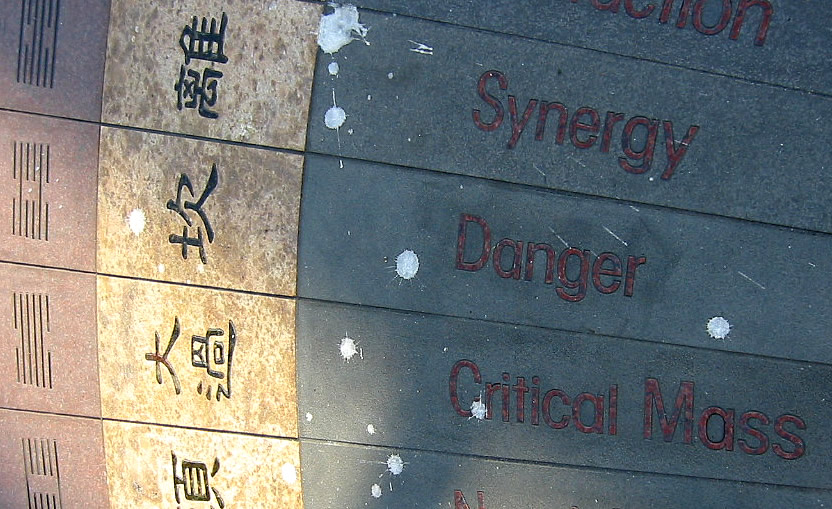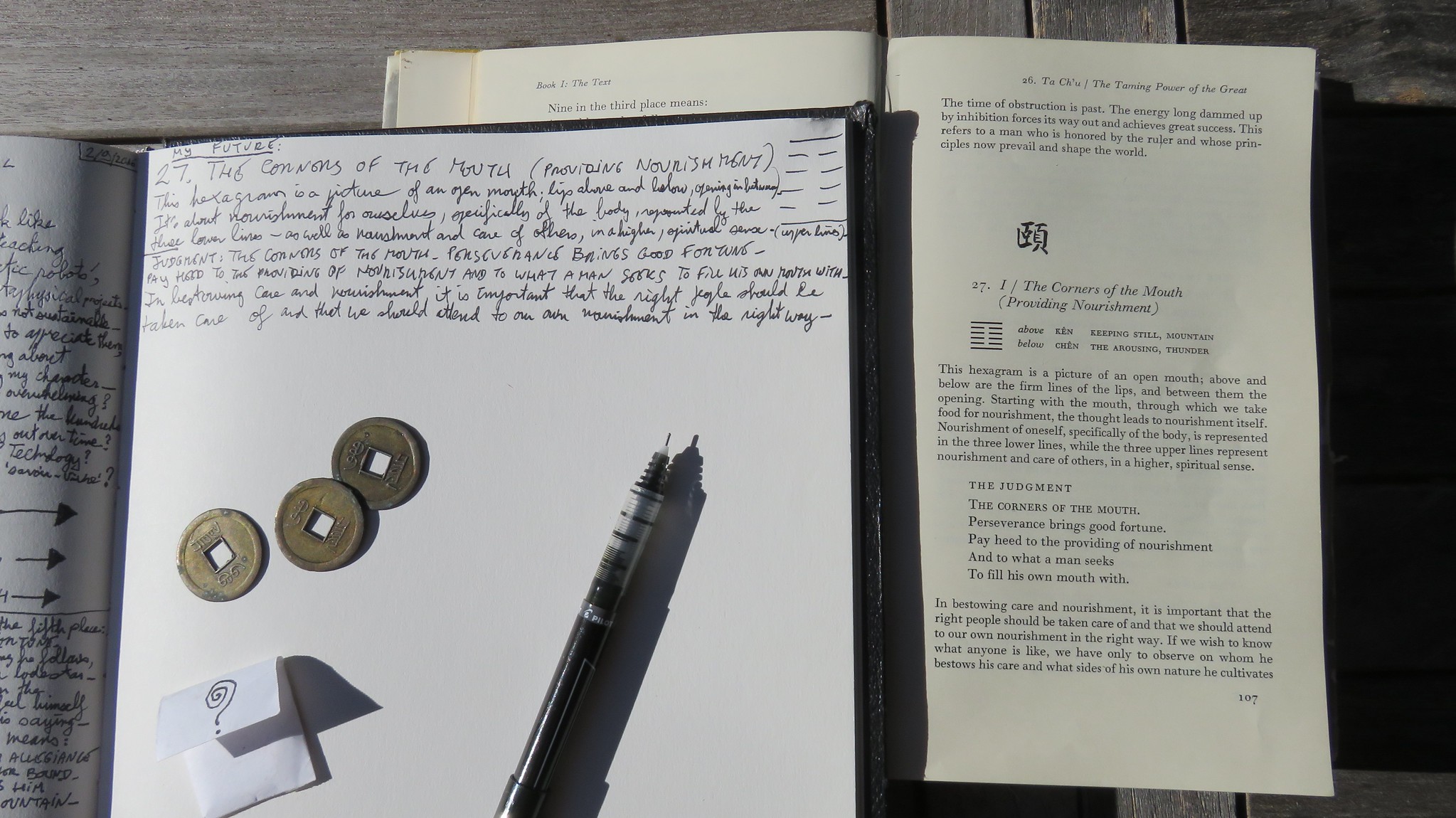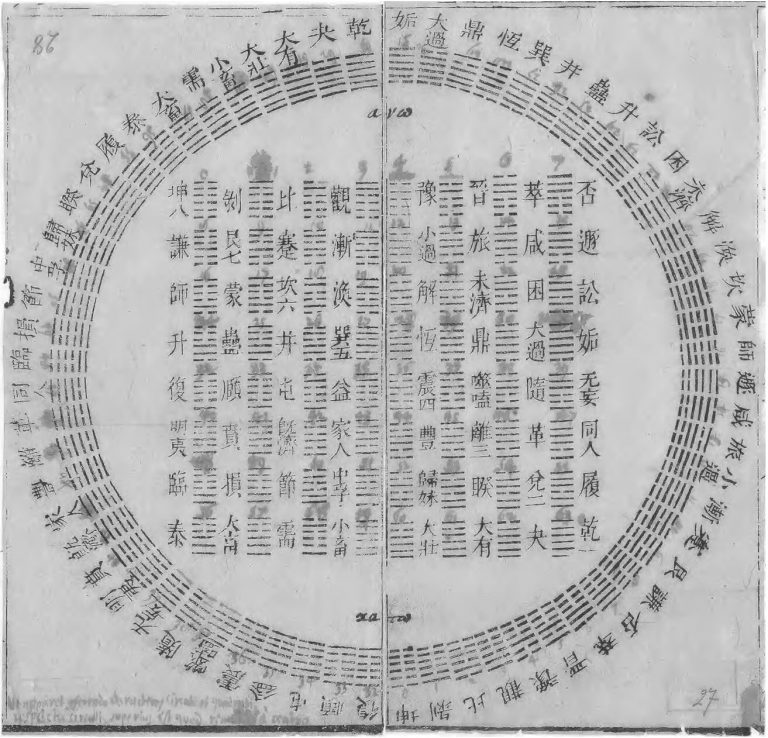While fresh and interesting subjects can inspire our creativity and provide new perspectives on alternative healthcare and holistic living, The I Ching, or Book of Changes, is a timeless source of knowledge and wisdom. One of the world’s oldest books, dating back at least 5,000 years, it is a philosophical text on the origin and nature of life on Earth. Understanding I Ching can lead to great wisdom.
For centuries, Chinese sages and kings used the oracle to interpret life events. The I Ching monitors 322,560 possible 6-line yin/yang combinations called hexagrams. Each hexagram depicts a human attribute or condition. A Western understanding of Eastern ideas must thus include the I Ching.
History of I Ching
According to ancient Chinese philosophy, the five elements and the Yin-Yang law govern everything in the cosmos, which is constantly evolving in a systematic manner.
In the third millennium BC, Fu Hsi, the mythical monarch of China, was credited with discovering the arrangements of the eight trigrams called Bagua (八卦). Each trigram consists of three lines that are either “broken” or “unbroken,” respectively representing yin or yang. Interestingly, a solid line is yang and represents 1 in binary code. A broken line is yin and represents 0 in binary code. This binary code of 1 and 0 is said to illustrate the parent energy from which everything in the cosmos may be generated,
King Wen is the second most essential figure in the composition of the I Ching. With his reputation as a great scholar (his name has the additional meaning of “civilization-king” or “scripture-king”), he is credited with writing the introduction to the 64 hexagrams and the texts (Judgments) associated with them. King Wen is known as the founder of the Chou dynasty (1150-249 BCE).

Success
You are now signed up for our newsletter
Success
Check your email to complete sign up
The Ten Wings ( 十翼 shí yì), or Great Commentary, contains significant contributions regarding the I Ching hexagrams and certain individual lines. Written by Confucius (551-479 B.C.) and his pupils, it is a vital work for the serious student who wishes for an improved understanding of The I Ching.
The I Ching is believed to have originated as part of a pre-written oral tradition that existed throughout primordial times. During this present cycle of civilization, the texts were collected for consultation and exchange between 475 and 221 B.C. It was spared the Qin Dynasty’s great book burning since it was one of five “Great Classics.”
The Tao
The Tao (Way of Nature) moves through and with the laws of change. The Tao is the path or gate through which all life flows. Taoists hold that nothing is stable or permanent and that everything is always changing and evolving. Time is a component of what we refer to as change. It is a universal law of existence that is enduring and indestructible.
The Chinese character Wuji (無極) means complete attentiveness and refers to a region of the limitless void that exists before meaning and form and is the source of creation. You are one with the Tao when you are aligned with Wuji. It is compared to a meditative state of total stillness and attentiveness. The term Wuji first appears as a concept in the Tao Te Ching, the Chinese classic text by Laozi, about returning to one’s original nature.
Wuji is represented by an empty circle, while the full circle represents Taijitu Shuo 太極圖說 (yin/yang fractal). In Explanation of the Diagram of the Supreme Ultimate, the two basic principles said to be driving physical change are the law of polar reversal. All things contain the seeds of their opposites, and the law of periodicity, which are changes that manifest in cycles and rhythms, as the seasons and phases of human character development.

The natural rules of nature and the universe may be easily broken, causing internal and external discord. These anomalies may cause physical and emotional problems. The universe responds in harmony only when our energy and lifestyles are in line with natural law. Taoism holds that change is dissonant only when opposed to the Tao: when the Tao is practiced, change is natural and simple, resulting in beauty and life.
Yin and Yang and The 5 Elements
It is Yin/Yang, the basic duality of the Universe, whose dynamic tension gives form to all occurrences and causes them to undergo changes. Female/male, earth/heaven, dark/light, in/out, even/odd, and other polarities are examples of the yin/yang polarity.
The five elements theory works together with Taiji, or two opposing forces of qi (氣) (meaning breath or vital energy). The Five Elements are formed by the fusion of Yin qi and Yang qi. Earth, metal, water, wood, and fire interact with each other in specific ways producing certain trends and influences in the lives of human beings and the life of the planet.
“Everything that appears in the physical realm is always connected with energy flow at the invisible level.”
Grand Master Lu
In Chinese medicine, disruption or imbalance of energy inside the body causes illness. Sickness occurs when the body’s organs and nervous system perform in an unbalanced manner. Qi normally travels freely via the channels and balances the organs. Diseases arise when energy is out of balance or hindered, requiring rebalancing.
The Eight Trigrams
Fu Hsi devised the trigrams from a turtle/ tortoise’s shell, which he discovered as it emerged from the Yellow River. He created a map called the Yellow River Map by tracing its marks and used this information to complete the mathematical arrangement of the trigrams. Because of the dualism of yin and yang, the trigrams were created to describe the progression of things across time in eight directions.
The Eight Trigrams is a miniature representation of the universe and has an inner structure, image, purpose, and essence. Different combinations of the eight trigrams form 64 hexagrams. The merging of the two trigrams inside the hexagrams symbolizes the coming together of heaven (higher) and earth (lower.) The interaction of the two trigrams signifies the interplay of cosmic forces as they impact human affairs.

The I Ching as an oracle
The 64 yin-yang combinations form a hexagram (picture) which shows the essential creative circumstances important in understanding The I Ching. These symbols and characters are believed to reveal important secrets about life and the universe, and have thus been used in divination for thousands of years.
By dropping three coins six times on a flat surface or dividing 50 Yarrow stalks or wood, the Oracle “freezes” the world or time, much like a snapshot to capture an image in order to study it. The random or spontaneous pattern of the falling coins will become a microcosm contrasted against and formed by the macrocosm of the cosmos. A person and their life on Earth are products of the briefly simultaneous physical forces in the cosmos that enable the coins to fall the way they do, offering a view of these parallel cosmic patterns.
In this manner, one links oneself and one’s circumstances with the fanning out of the universe. By studying the text, the judgment, and the image of the hexagram cast, it is possible to have a better understanding of one’s current situation, while exploring this immense and vast cosmos.
There is nothing constant in the universe, all ebb and flow, and every shape that’s born bears in its womb the seeds of change.
-Ovid, Metamorphosis.







